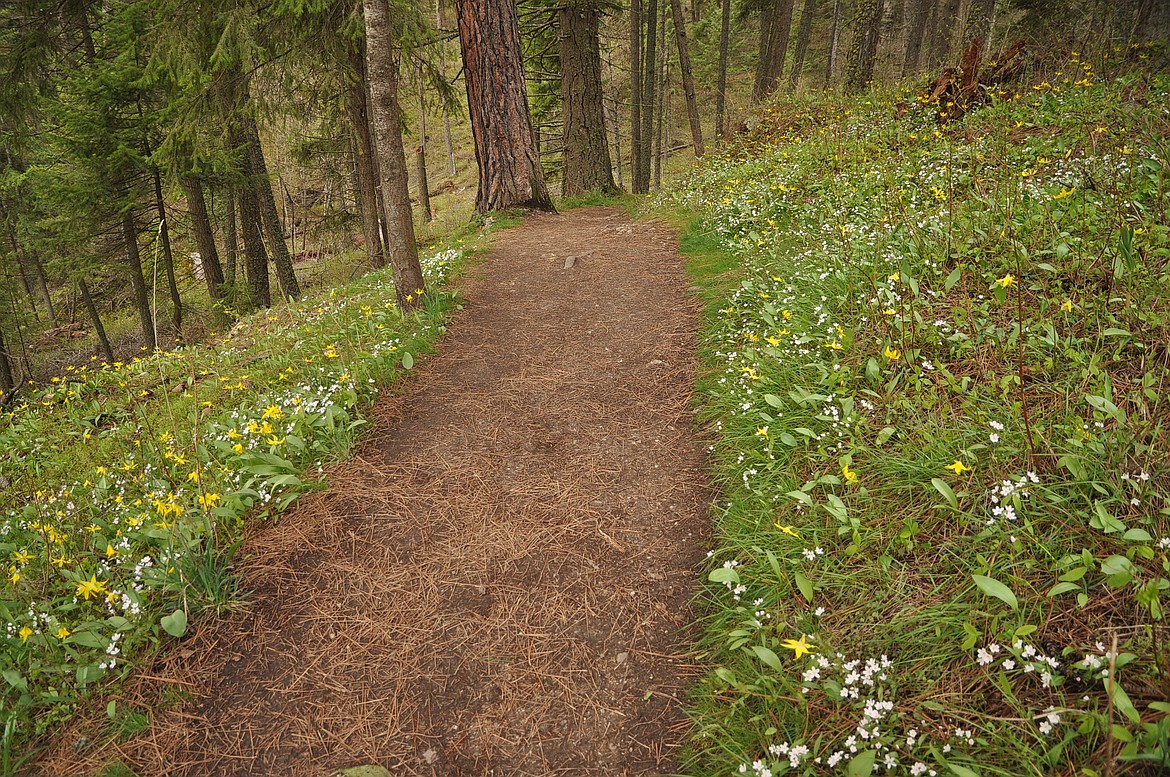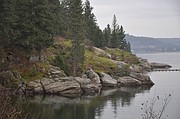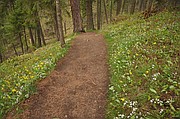Tubbs Hill is unique and special
So what is Tubbs Hill? It’s a city park, but it’s a different kind of city park. There are no playgrounds, bathrooms, or baseball fields. This is a park where we work to conserve a natural lakeside forest for the public to visit and enjoy. In this park we maintain a natural habitat for the animals that live here, such as deer, wild turkeys, and birds of prey. There are Osprey nests here, and tall trees at the edge of the lake where they can perch to look for the fish they eat. There are also beaches for swimming, but you have to take a hike or paddle a kayak or canoe to get to them. Tubbs is a managed forest, too small to survive on its own.
There may be no other city that has a place like this, it is very unique, something we all need to work to keep.
On Tubbs Hill we like to remind everyone of a very important rule for helping to keep the ecosystem healthy: We say “take only photographs, leave only footprints.” What might this mean? Why?
Footprints show that hikers were staying on the trail, and we leave only footprints and not trash or trampled plants. We take only photographs meaning we don’t disturb or remove rocks, plants, flowers, or anything else (except trash) from the hill. The plants here have to struggle to survive. The soil here on the hill is a very fragile thin layer of topsoil. In most places about 2 feet of nutrient-rich topsoil lies at the surface of the earth, underneath that is a coarser moist material, and under that is rock. On Tubbs we have just 5 inches or less of weathered soil on top of rock that has many cracks. All those cracks drain away the water instead of holding it close to nourish the soil and plants. The soil here has good nutrients, but there is just not enough of it. That 5 inches of soil is the maximum depth, some places have much less. So with just a few inches of good soil perched on rocks with no nutrients, there is little here for the plants to survive on, making it very important that we let the plants that are here continue to live and not increase their struggle.
Another thing to consider is our trails. The main trails have been packed down firm, so the soil is held in place. When people go off the main trails, their feet kick the soil loose, disturbing it. Rain then easily washes the soil down the hill and into the lake. Displacing soil also displaces plants whose roots hold the soil in place, which leads to even more erosion. The best thing people can do to help keep Tubbs Hill healthy is to stay on the main trails and avoid trampling plants. And remember to leave no trash and clean up after your pets.
The biggest plants on the hill are our trees. We have Ponderosa Pine, Douglas Fir, Western White Pine, and Larch. If you hike around the entire hill, you can spot some trees that don’t look very healthy. Many of our trees here are dealing with some tough diseases and pests. Our Ponderosa Pines face two different beetles. Young trees whose trunks are less than 8 inches in diameter can be attacked by the Ips Pini, a small beetle that bores under the bark. Older Ponderosas face the western pine beetle. The female bores a wavy line laying eggs under the bark. The larvae eat the cambium layer, circling the tree, which girdles the tree causing it to be unable to get nutrients, causing death. Woodpeckers eat the larvae, and so you will see a large pile of bark under an older Ponderosa that has been killed by the western pine beetle. Ponderosas on the dry south side of the hill also have to deal with mistletoe, a kind of plant that lives off a tree, causing the host tree to have stunted growth and typically the limb that the mistletoe is on will die, sometimes the entire tree will die.
Douglas Fir are struggling with a kind of root rot, a fungus called Armillaria mellea or shoestring rot. Back in 1996 there was an ice storm that caused many trees to fall. The city did a good job cleaning up all the fallen trees, which helped prevent the Douglas Fir bark beetle from infesting the hill. However, all of the stumps that were left became a great habitat for the root rot. Cutting down the diseased trees will not stop the root rot because it spreads through the root systems of the infected trees. There is no easy way to eliminate this disease.
The forest on the hill is a managed forest. It is such a small area it has to be managed to be a healthy natural forest. There is too much fir on the hill right now. Adding other native species like Larch, White Pine, and Ponderosa Pine increases diversity, which makes it healthier and more resistant to insects and disease. In a natural environment, fire would take out brush, stumps, unhealthy trees, and allow a variety of tree seeds to disperse and grow new trees. Without fire, there is nothing to keep resistant species established. The city, with aid of volunteers, is planting tree species that are resistant to root rot. This will be the next forest on Tubbs Hill.
In the springtime we have lots of flowers here. Remember that flowers are part of the process that lets plants reproduce so that they continue to live. What happens when we interrupt this process? Plants have to wait another year for the chance to reproduce and the overall population will decline. If plants die, their roots no longer help hold the fragile soil in place, and it begins to erode. You might think there are many flowers on Tubbs Hill, but there are also many visitors, in fact the city estimates about 150,000 people visit the hill each year. If everyone took just one flower, would we have many left?
Tubbs Hill is a very special place. It’s fun to explore while hiking the trails or swimming at a beach. But it is very important that each and every visitor understands that they are responsible for keeping our hill healthy so it can last through our lifetimes and beyond. Remember to stay on the main trails and take care not to disturb the plants. The Tubbs Hill Foundation is committed to protecting the hill and keeping it healthy, but we need your help.
So, revisit our natural treasure, but “take only photographs, leave only footprints” and bring a bag to collect some trash.
•••
George Ives is a member of the Tubbs Hill Foundation.







